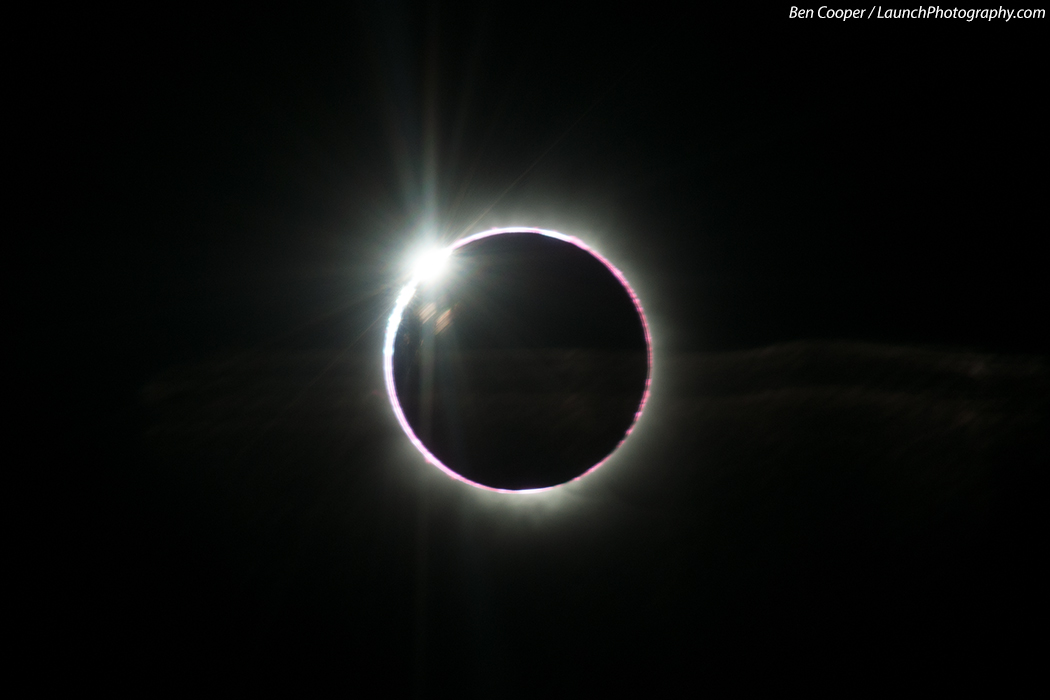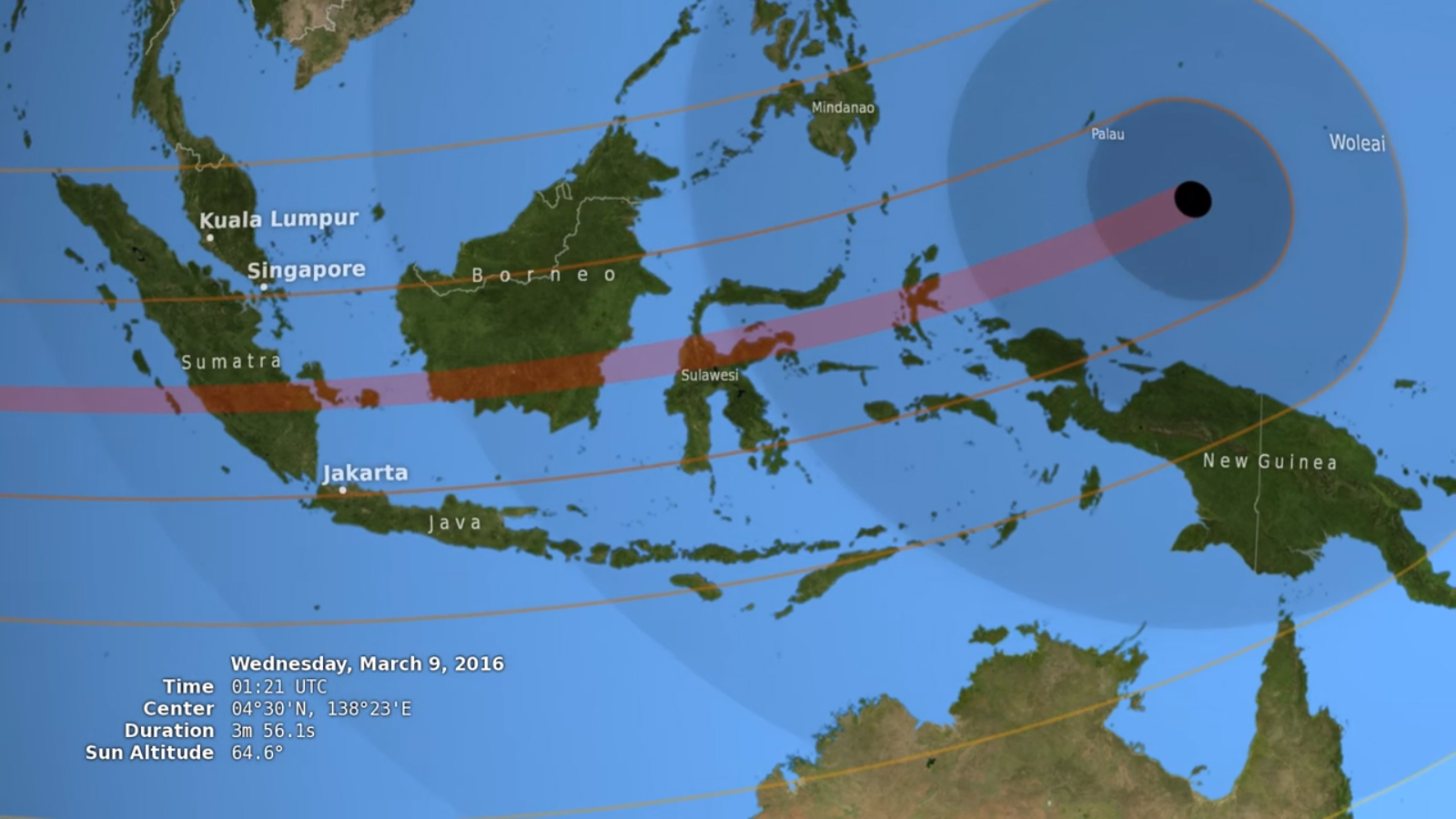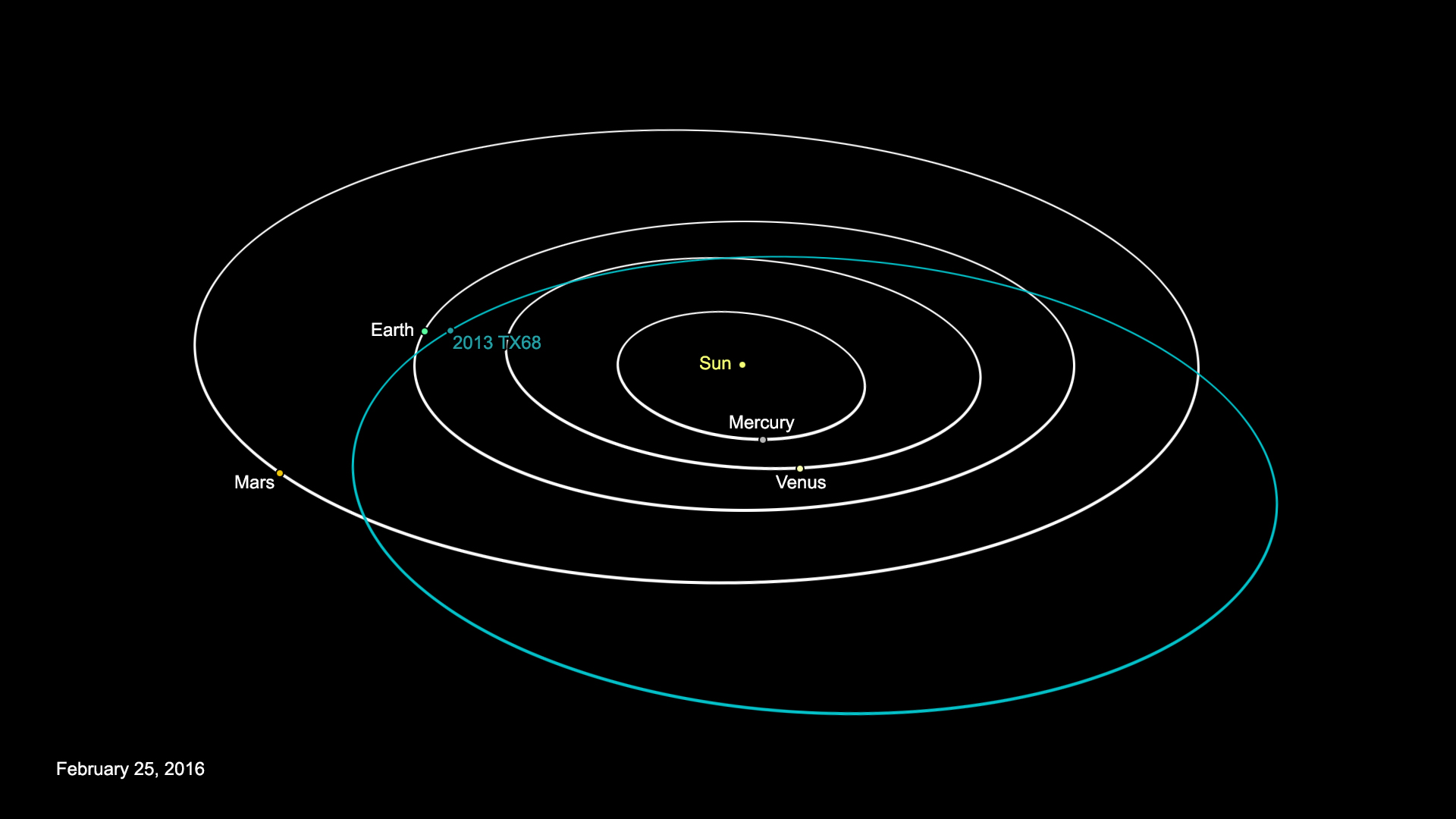Total Solar Eclipse & Asteroid Flyby on Tuesday, a Cosmic Double Feature

Tuesday seems to be a double-header for cosmic events: A total solar eclipse will shadow Indonesia and the North Pacific Ocean, and a 100-foot-wide (30 meter) asteroid will streak past Earth.
The total solar eclipse of March 2016 is the only total eclipse of the sun of the year. The last one occurred in March 2015 and this time around the moon's shadow will travel across the Earth late Tuesday (March 8), for the Pacific, and early Wednesday (March 9) in Indonesia. (Strangely, because of the international dateline, this actually happens in the opposite order — it starts off over Indonesia and travels eastward across the Pacific Ocean; it will be Tuesday for about the last third of its journey.) So while its timing is firm, you'll need to check a list to tell when exactly to look out for a full or partial eclipse.
Remember, do not look directly at the sun with the naked eye or a telescope — you can use special eclipse-viewing glasses or build a pinhole projector. [Solar Eclipses: An Observer's Guide (Infographic)]
The asteroid's arrival is uncertain in a different way: researchers originally thought the asteroid flyby would be Saturday (March 5), but updated their predictionin late February. The asteroid should pass by about 3 million miles (5 million kilometers) from Earth, but there's a possibility it will approach as close as 15,000 miles (24,000 km), NASA officials said in a statement.

If you're not lucky enough to live in the right geographical area to see either a total solar eclipse, where the moon entirely blots out the sun, or a partial one, where a dark bite is taken out of it, you can still watch the process live in a webcast hosted by the Slooh Community Observatory. The Slooh broadcast will begin March 8 at 6 p.m. EST (2300 GMT) and will stretch until 9 p.m. EST (0200 on March 9 GMT). You can also watch the webcast live on Space.com, courtesy of Slooh.
NASA will host its own solar eclipse webcast starting at 8 p.m. EST (0100 on March 9 GMT) on NASA TV, and they will have a variety of events lined up to explore the research they'll do during the eclipse: NASA scientists will be answering questions on Twitter, Google+, Facebook and Instagram with the hashtag #eclipse2016, and they'll be tweeting with the account @NASASunEarth.
NASA solar scientists will also host a Facebook Q&A the day before, at 2 p.m. EST (1400 GMT) March 7, and will answer questions on Reddit Tuesday at 1 p.m. EST (1800 GMT).
Get the Space.com Newsletter
Breaking space news, the latest updates on rocket launches, skywatching events and more!

For those hoping to observe the passing asteroid, 2013 TX68, live coverage has not yet been announced — but NASA officials said in their statement that it would likely be very dim and difficult to observe due to the distance from Earth. It last flew by Earth two years ago at a distance of 1.3 million miles (2 million km).
Wherever you are, you can check back here at Space.com this week for our full coverage of the two events and what scientists can learn from them.
Editor's note: If you safely capture an amazing photo of the March 8 total solar eclipse and would like to share it with us and our news partners for a story or gallery, send images and comments in to managing editor Tariq Malik at spacephotos@space.com.
Email Sarah Lewin at slewin@space.com or follow her @SarahExplains. Follow us @Spacedotcom, Facebook and Google+. Original article on Space.com.
Join our Space Forums to keep talking space on the latest missions, night sky and more! And if you have a news tip, correction or comment, let us know at: community@space.com.

Sarah Lewin started writing for Space.com in June of 2015 as a Staff Writer and became Associate Editor in 2019 . Her work has been featured by Scientific American, IEEE Spectrum, Quanta Magazine, Wired, The Scientist, Science Friday and WGBH's Inside NOVA. Sarah has an MA from NYU's Science, Health and Environmental Reporting Program and an AB in mathematics from Brown University. When not writing, reading or thinking about space, Sarah enjoys musical theatre and mathematical papercraft. She is currently Assistant News Editor at Scientific American. You can follow her on Twitter @SarahExplains.









